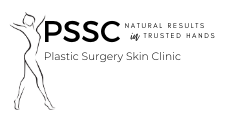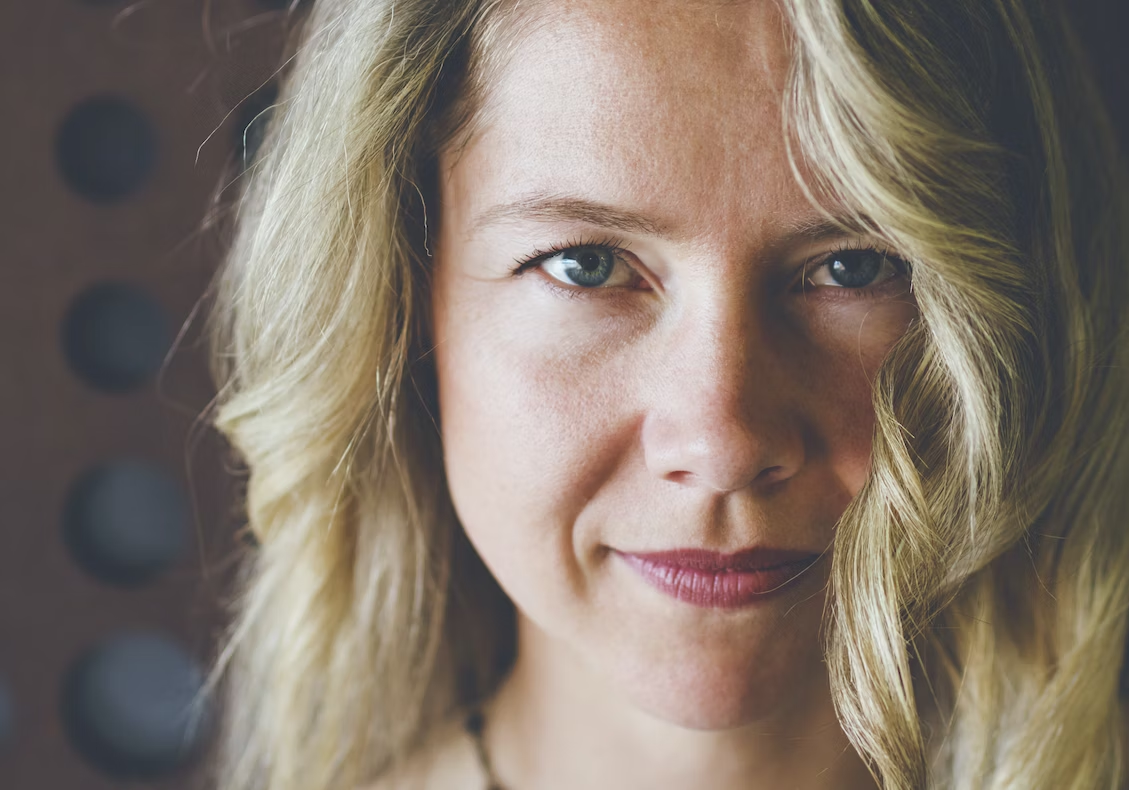At the first sight of jowls and marionnettes, you might feel your face and ask: “When did this happen”? Sagging skin (or skin laxity) is a natural part of aging, starting at age 35-40 when collagen quality and quantity declines. But even then, sagging skin can be sneaky and take you by surprise.
Fortunately, you can slow things down without needing a face lift. A few sessions of radio frequency (RF) skin tightening can help slow down and reverse skin laxity. When started early, you can regain some of that youthful firmness. Here’s an overview of how it works and our approach to RF treatment for skin tightening.
What is Radio Frequency Skin Tightening?
Radio frequency skin tightening is a nonsurgical treatment, approved by Health Canada, that restores firmness to loose skin. It works by directing low-energy radiation and heat to affected areas, stimulating protein production which strengthens skin. Radio frequency devices produce temperatures ranging between 106°F and 110°F (41–43°C). The treatment session at a clinic lasts 20-40 minutes.
How Does Radio Frequency Tightening Work to Treat Sagging Skin?
A practitioner manoeuvers the device over the area of loose skin, channeling heat towards it. That heat exposure triggers the release of heat shock proteins (HSPs), resulting in a three-fold process.
- It unravels collagen, causing it to contract and tighten the skin above it. Think of it like shrink-wrap clamping down on an airtight container of food.
- Next, your body triggers fibroblast cells in the deeper layers of skin to produce new collagen and elastin fibres. These fibres give skin its strength and firmness, restoring the tightness that was lost.
- Lastly, the heat widens blood vessels (a.k.a vasodilation) and increases blood flow to the skin. This shuttles oxygen and nutrients to the skin, helping to remove waste products that may damage it.
These three mechanisms help to keep your skin looking tight, smooth and plump. Of course, these results are more guaranteed when you’re treated with the right device and by the right practitioner.
At PSSC, we use the InMode, which is approved by Health Canada, and considered the gold standard for RF treatment. It allows us to target the precise depth of skin tissue to give you the best outcomes possible with minimal discomfort. Additionally, we can also add a microneedling option to further boost collagen and elastin stimulation for tighter skin.
What Does Radio Frequency Therapy Treat?
As its name implies, radio frequency skin tightening treats sagging skin in its various forms. The most common target areas are the face and neck, followed by the arms and hands, knees, buttocks, and belly (“saddle bag” area). However, practitioners also use radio frequency treatments for body contouring, vaginal rejuvenation and even medical conditions such as malignant tumours.
Additional uses for radio frequency skin treatments
- Wrinkles
- Fine lines
- Eye bags
- Under-eye circles
- Smokers lines
- Laugh lines
- Crows feet
- Turkey Neck
Essentially, radio frequency can reduce the appearance of skin that looks loose, regardless of where and how it forms.
Who is Radio Frequency Tightening For?
Radio frequency skin tightening is an option for patients of all ages. However, the treatment goals will likely vary depending on your age.
RF treatment for younger patients focuses on preserving skin integrity and off-setting aging signs. For older patients, the goal of RF tightening is to reverse skin laxity and restore a more youthful look.
Now, you might still feel unsure whether you truly need radio frequency treatment at your age. And reading articles or forum discussions may offer some pointers, but much of that info may seem conflicting.
At PSSC, we offer a complimentary consultation to determine how RF tightening will benefit you based on your age. Our first step is to inquire about your treatment goals and desired outcomes. We then match the technology’s capabilities with your goals, and prescribe a treatment plan that will suit you best.
How Effective is Radio Frequency for Skin Sagging
For skin sagging that’s mild or moderate, radio frequency treatment will deliver noticeable results. One study found that 83.2% of RF patients experienced a 1-point improvement on the Fitzpatrick Wrinkle Classification System (FWCS).
Take, for example, someone with a Grade 2 wrinkle with a depth of 1 to 2 mm. RF treatment could reduce it to a Grade 1 level, which is considered a wrinkle with just “slight indentation”. That same study also found that 61.5% of patients had an eyebrow lift of ≥0.5 mm. That’s nothing to scoff at!
Of course, every patient is different, and factors such as age and willingness to comply with treatment will influence your results. The less advanced skin laxity is, the more noticeable the results will be. But receiving the scheduled amount of treatment and supervision also matters.
A Snapshot of the Radio Frequency Tightening Procedure
In a clinic, a licensed medical aesthetician performs RF treatments. Not only do they conduct the treatment, they will also prep you for it and offer post-care consultation and care for anything that might transpire after the treatment.
Before a radio frequency treatment session
- The practitioner examines your skin and discusses your goals of treatment.
- They will likely take “before” pictures (which they will compare with photos taken after).
- The practitioner will ask if you have any medical conditions, especially skin diseases and if you are pregnant.
- Immediately before the procedure, the practitioner may apply a topical anaesthetic.
During a radio frequency treatment session
- The practitioner will clean and sterilise the target area of skin.
- After, they will manoeuvre the handheld RF device over the area.
After a radio frequency treatment session
- The practitioner may apply a cooling gel or calming product to reduce redness
How quickly can I see results from radio frequency skin tightening?
Expect to see more dramatic results in two to six months. This is due to the fact that actual collagen and elastin synthesis (and remodelling) occurs over this period of time. With that said, you should begin to see improved skin firmness with each treatment due to immediate collagen stimulation.
How Long Do Radio Frequency Results Last?
With proper maintenance and skin care, results of radio frequency skin tightening last one to three years. Your skin will still age, but maintenance treatments will slow down new skin sagging when the effects wear off.
Risks & Benefits of Radio Frequency Skin Tightening
Like all cosmetic procedures, radio frequency skin tightening has its pros and cons. But with expert care and supervision, you’ll experience all the benefits of RF treatment, with minimal to no side effects at all.
Benefits of radio frequency skin tightening for skin sagging
- Noninvasive—to go under the knife!
- Fast and virtually painless
- Natural, gradual changes
- Less expensive than more invasive treatments
- No peeling and scarring
- Quick recovery (no need to miss work or other obligations)
Risks of radio frequency skin tightening for skin sagging
- Mild redness
- Mild swelling (edema)
- Skin discolouration
- Burns (this is very rare and usually caused by poorly manufactured devices that are unfortunately marketed for home use)
Recovery after a radio frequency treatment is typically quick and painless. You should be able to go back to work and your routine within a day of the procedure. You can also apply cosmetic and skin products right after. Side effects like redness and swelling will usually be mild and last for no more than 24 hours.
Since we use industry-leading devices with precise targeting abilities, we’re able to spare almost all of our patients from side effects. Also, we use topical agents before the procedure to reduce even the mildest forms of redness and swelling that may occur after treatment.
How Safe is Radio Frequency Skin Tightening Overall?
Radio frequency skin tightening is a safe procedure, and has been approved by Health Canada since the early 2000s. Aside from some minor side effects that usually fade quickly, there are no recognized dangers that would make the treatment unsafe.
Some worry that the radiation emitted by RF devices may lead to cancer and other harmful effects. However, the radio waves they emit are low-energy, meaning that they’re not nearly powerful enough to cause any bodily harm. They are the weakest type of radiation on the spectrum, making them far less harmful than microwaves, infrared and UV rays, all of which we are exposed to daily.
Getting Started With Radio Frequency Skin Tightening
There are a range of radio frequency devices out there, both for in-clinic settings, but also, at-home use. You may have seen these at-home devices, and claims that they offer the same results as clinical devices. With that said, your dilemma might be whether you should try an RF treatment at home or go to a clinic.
We highly recommend in-clinic radio frequency treatment, a topic which we discuss more at length in our article: “Why In-Clinic RF Treatments Beat At-Home Device“. When conducted in a clinical setting, you have access to industry-leading RF technology under the supervision of experienced practitioners. That guarantees your safety and offers you the best results possible.
At PSSC, our certified plastic surgeons and aestheticians bring over 60 years of combined experience, including expertise performing RF treatments for skin tightening. Book your complimentary consultation or call us at 905-898-1814 to speak with a practitioner who will answer your questions and concerns about RF treatment. We have limited RF openings for the summer season, so don’t wait to get started—tighter, firmer skin is yours to have right now!

